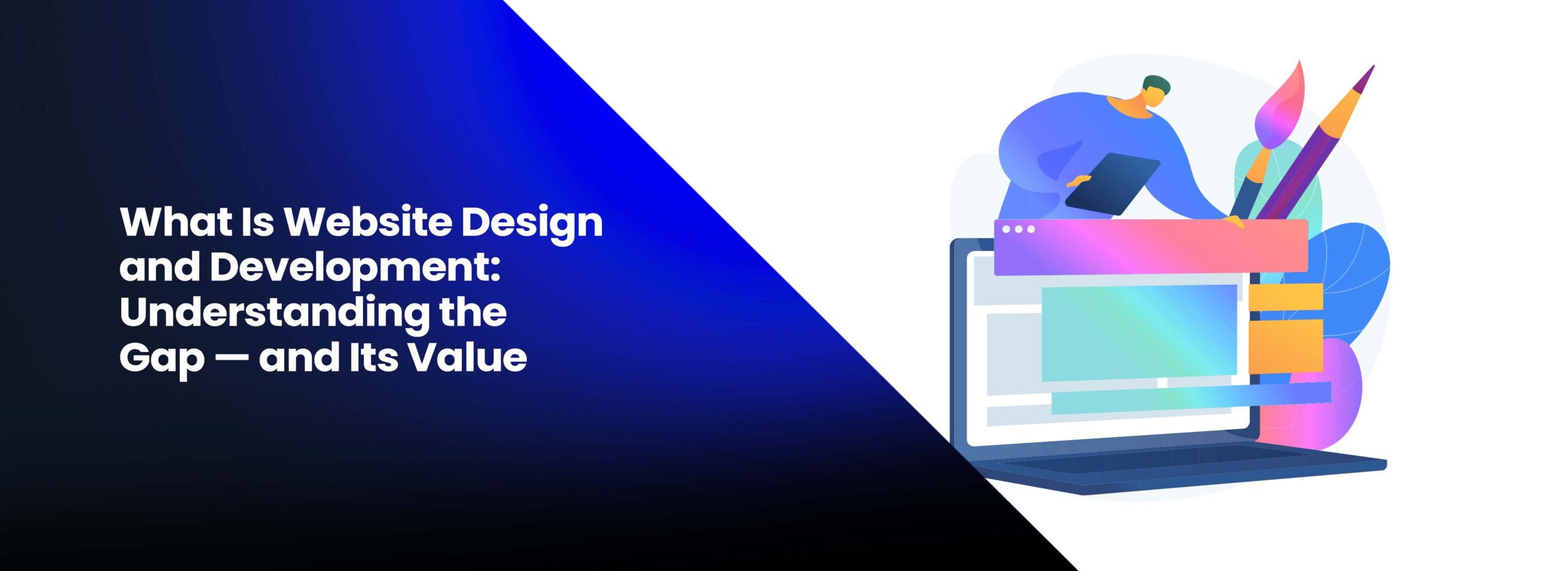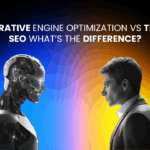What Is Website Design and Development: Understanding the Gap — and Its Value
Published on: 23 October, 2025

In the age of screens and searches, your website is where your brand first makes an impression. When it comes to ecommerce and custom website development, many people mix up design and development, which are both crucial for building a website.
Understanding the difference isn’t just a technical issue; it’s a strategic advantage that can affect your brand’s success online.
The Foundation: What Is Website Design and Development?
Website design focuses on the visual appeal, layout, and user experience (UX), while website development in karachi deals with coding, functionality, and technical implementation. Together, they form the backbone of a successful online presence.
A web designer makes sure the site looks attractive and engaging. Meanwhile, a developer ensures it functions well on all devices. Whether you’re creating an online store, a portfolio, or a corporate site, both roles are essential for blending performance and aesthetics.
Key Components:
- Website design = User interface (UI), color schemes, typography, and visuals
- Website development = HTML, CSS, JavaScript, backend logic, and database connections
Why Understanding the Difference Matters
Knowing the difference between design and development can save you time, money, and stress. Businesses that clearly define these roles experience faster project delivery, improved SEO results, and higher conversion rates with the best SEO services in pakistan.
When you invest in both areas, you’re not just creating a site; you’re creating an experience.
Why It Matters:
- Design affects how users perceive your brand.
- Development shapes how users engage with your platform.
When both aspects work together, your online presence becomes a tool for growth rather than just an online brochure.
The Role of Design in Modern Website Development
A website’s design merges creativity with psychology. It’s about creating a visual identity that tells your brand story. Good design builds trust and motivates users to take action.
Web designers use tools like Figma, Adobe XD, and Canva to translate ideas into digital interfaces. The rise of responsive and mobile-first design ensures your digital marketing company in pakistan website performs beautifully on every screen size.
Incorporating visual elements like images, icons, and animations adds depth and clarity to your design. A strong UI/UX makes sure that visitors don’t just visit; they stay, explore, and convert.
The Power of Development: Turning Design into Reality
Website development transforms creative ideas into functional sites. Developers use programming languages such as HTML, CSS, JavaScript, React, and PHP to make static designs active. Backend developers manage data, APIs, and server integrations.
For businesses focusing on e-commerce website development, features like payment gateways, inventory systems, and user dashboards are crucial.
Custom website development ensures scalability — meaning your website grows as your business grows. From interactive dashboards to AI-powered chatbots, modern web development creates limitless graphic design agency opportunities.
Essential Website Developer Skills
A skilled website developer blends creativity with technical skills. Here are important website developer skills to have today:
- Strong knowledge of front-end frameworks (React, Vue.js, or Angular).
- Backend programming (Node.js, Laravel, or Python).
- Database management (MySQL, MongoDB).
- Version control (Git).
- SEO-friendly coding and an understanding of responsive design.
Developers who keep learning and adapting to new technologies are the ones who build high-performing, secure, and scalable websites..
Creative Website Development Ideas
Innovation drives online success. Here are some website development ideas that can help businesses stand out:
- Interactive Portfolios: For freelancers or agencies — showcase projects in visually appealing formats.
- Custom Dashboards: For websites, allowing clients to manage data in real time.
- AI Chatbots and Automation: Improve customer experience and reduce response times.
- Micro-Animations: Add subtle animations for smoother transitions and better engagement.
These website development project ideas help elevate your brand’s credibility and user satisfaction.
Building a Portfolio Website for Web Developers
A portfolio website for a web developer acts as a digital resume — it’s proof of skill, creativity, and consistency. To build one that attracts clients:
- Highlight your best projects with live links and screenshots.
- Include testimonials from past clients.
- Optimize it with keywords like “custom website development” or “software companies in karachi.”
- Add clear CTAs — like “Hire Me” or “View My Work.”
Your portfolio isn’t just for showing off; it’s your marketing tool around the clock.
The Business Value: Why This Gap Truly Matters
When businesses treat design and development as a single unit, they often miss growth opportunities. By understanding how each function supports the other, you can achieve better performance and a higher return on investment.
Good website design builds trust and emotional connections. Smart development adds speed, interactivity, and functionality. Together, they create a complete digital strategy that turns visitors into customers.
For example, an ecommerce site with stunning visuals but slow loading will lose customers. Similarly, a technically perfect site without appealing design won’t foster brand loyalty. The real value is in finding the right balance.
To Wrap Things Up: Building Beyond Code and Color
So, what is website design and development really about? It’s about synergy — combining beauty, function, and technology to build experiences that engage and convert. Whether you’re starting your first project or scaling an established business, invest in both social media marketing agency and strategic design. The gap between design and development isn’t a divide — it’s an opportunity to differentiate, lead, and grow in a competitive digital world.
FAQ’s
1. What’s the difference between designing a site and building it?
Website design is about the look and vibe – stuff like page structure, color choices, fonts, how buttons work, also how easy it is to use. WebFX slash Figma slash building a website means handling the tech side – like what people see and click on, along with the hidden parts like servers and data storage, which together make sure the layout actually runs.
2. What makes nailing the look along with the coding so key for a site?
A site might look great yet fail to work right – this annoys people, kills conversions; on the flip side, flawless tech behind an ugly layout pushes visitors away just as fast. Mix both smart design and solid performance, then watch ease of use, loading times, search ranking, trust in your name, and visitor interaction climb together.
3. What steps matter most when building a site?
Typical stages go like this: first, Planning or Discovery, then you jump into Wireframing or Design – after that comes Front-End work followed by Back-End stuff – once both are done, it’s time for Testing before going Live – and finally, ongoing tweaks happen during Maintenance mixed with Optimization. All these steps help guide the project smoothly from an idea to a working website.
4. What ought companies keep an eye out for when picking someone to build their site?
Look at: their past projects in design and coding, skill in building sites that work well on phones or tablets, know-how in speeding up pages and helping rank higher on search engines, how straight they are when talking, whether deadlines make sense, also what help they offer after going live. A teammate that handles design, works well plus ranks good online brings stronger results.
5. What’s the effect of site layout plus coding on search rankings, along with future company success? How you set up a website – like layout, how it works on phones, or moving between pages – affects its visibility, along with stuff like loading time, tidy coding, and easy-to-read tags. When those things work well together, chances go up for better search rankings, keeping visitors around longer, and also boosting returns for the business.




